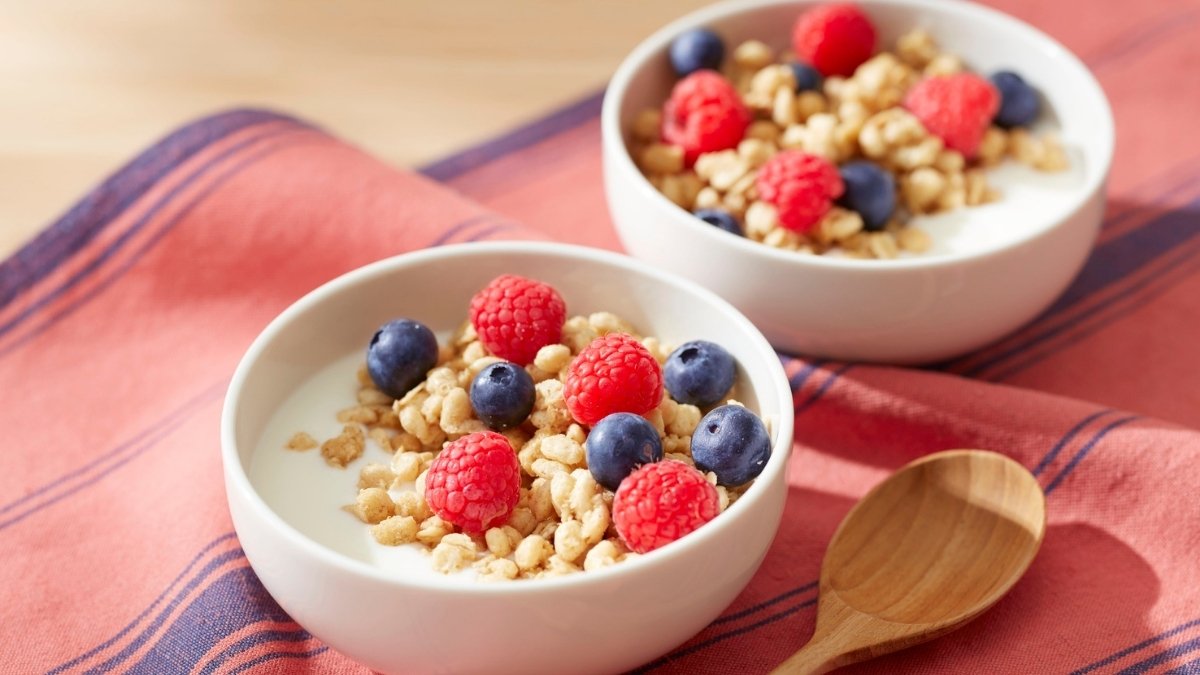The Superfood Routine That Helps a 75-Year-Old Maintain His Biological Age

A 75-year-old man walked into a longevity clinic expecting bad news. His doctor ordered a biological age test. The results shocked both of them: his body was functioning like a 63-year-old. He’d turned back the clock twelve years.
His secret wasn’t expensive supplements or extreme diets. It was specific foods eaten in a specific pattern.
Most people accept aging as inevitable decline. You wake up stiffer. Think slower. Get tired faster. But recent research proves your biological age can actually reverse through dietary changes. The difference between biological age vs chronological age is simple: one counts birthdays, the other measures how well your cells work.
The problem? Most anti-aging diet advice is either too generic to work, backed by zero science, or so complicated you quit after three days.

Here’s what you’ll learn in this guide:
The exact superfoods for seniors proven to reduce biological age by 2-3 years in clinical studies. A practical daily routine based on Harvard’s 30-year research tracking over 100,000 people.
How to measure if it’s working for your body using free and paid tests. Simple food swaps that reverse aging without overhauling your entire life.
Understanding Biological Age: Why Your Real Age Matters More Than Your Birth Year
Biological age measures how well your cells actually work, not just how many birthdays you’ve had. And here’s the exciting part: 2024 research from USC shows you can turn back your biological clock by an average of 2.5 years through diet changes alone.
Think of it like car mileage. Two 2015 cars might show different wear depending on how they were driven and maintained. Your body works the same way.

Scientists now use something called epigenetic clocks to measure your real age. These tests look at DNA methylation patterns—chemical tags on your genes that change as you age. The more tags you have in certain spots, the “older” your cells behave. Unlike your birth certificate, these markers show your actual disease risk and how long you’ll stay healthy.
Here’s what makes this matter: In a 30-year Harvard study tracking 105,015 people, those who ate the healthiest had 86% better odds of reaching 70 without chronic disease. By age 75, their advantage jumped to 2.24 times better odds.

The sobering truth? Only 9.3% of participants made it to 70 with good physical, mental, and cognitive health. And 80% of older adults now live with two or more chronic conditions.
The Science-Backed Superfoods That Actually Reverse Biological Age
Most “superfood” lists are just marketing hype. But these foods passed the real test: peer-reviewed studies with thousands of participants and measurable results.
What Makes These Foods Actually Work
Polyphenols are plant compounds that fight aging at the cellular level. They reduce inflammation, fix damaged proteins, and can even change how your genes express themselves. Coffee, tea, extra-virgin olive oil, and blueberries pack the most polyphenols per serving.

Think of polyphenols as your body’s cleanup crew. They sweep out the damage that makes you age faster.
The Foods That Passed Scientific Testing
Blueberries: A 2024 study tracked people who ate one cup daily. After 12 weeks, they showed 14% better memory recall and sharper thinking. That’s about half a cup of fresh or three-quarters cup of frozen berries.

Pistachios: Research in 2025 found 1.5 ounces daily (about 49 nuts) cut bad cholesterol by 9%. Blood vessel function improved by 15%. Your heart literally works better.

Dark chocolate: Harvard researchers followed people for years. Those eating five servings weekly had 21% lower risk of type 2 diabetes. One serving equals one ounce of 70% cacao or darker.

Leafy greens: Just 100 grams daily (one large salad) dropped death risk from all causes by 25%. Spinach, kale, and arugula count. So does romaine lettuce.

What These Foods Do Inside Your Body
They all work on epigenetic clocks—the markers that show your real age. Polyphenol-rich foods literally change which genes turn on and off. This isn’t theory. Scientists can measure the difference in your DNA methylation patterns.

The Mediterranean diet combines most of these foods. So does the AHEI diet used in Harvard’s 30-year study. Both focus on plants, healthy fats, and whole foods.
The Foods That Age You Faster
Here’s what research says speeds up your biological clock: eggs, organ meat, sausages, cheese, starchy vegetables, added sugar, and lunch meat. A 2024 study found people who ate more of these foods showed older epigenetic ages.

Added sugar hits hardest. Each gram you eat increases your epigenetic age. Even if you eat healthy otherwise, sugar still ages you at the cellular level.
This doesn’t mean never eat these foods. It means don’t make them daily habits.
What to Eat Starting Today
Focus on getting polyphenol-rich foods at every meal. Berries at breakfast. Leafy greens at lunch. Nuts as snacks. Dark chocolate after dinner. Extra-virgin olive oil on everything.

Your cells respond fast. Studies show measurable changes in inflammation markers within weeks.
The Fasting-Mimicking Strategy That Accelerates Results
Eating superfoods daily works. But add this one strategy each month, and your results double.

A 2024 study in Nature Communications tracked people doing three monthly cycles of a fasting-mimicking diet. Their biological age dropped by 2.5 years in just three months. That’s faster than any other diet intervention on record.
How the Protocol Works
The fasting-mimicking diet tricks your body into thinking it’s fasting without actually starving. You eat specific foods for five days straight, once per month.
Day 1: Eat about 1,100 calories. Days 2-5: Drop to 800 calories. The food is high in healthy fats, low in protein and carbs. Think nuts, olives, vegetable soups, and herbal teas.

Your body shifts into repair mode. It starts cleaning out damaged cells and growing new, younger ones.
What Actually Happens Inside Your Body
Participants lost significant belly fat. Those who started with fatty liver saw their liver fat cut nearly in half. Their immune systems looked younger on blood tests—more fresh immune cells, fewer worn-out ones.

This isn’t about losing weight. It’s about cellular cleanup. Your body gets a monthly reset.
Before You Try This
If you have diabetes or take medications, talk to your doctor first. Blood sugar can drop fast during fasting days. You might need to adjust insulin or other meds.

People over 70 should get medical clearance. Same for anyone with heart conditions or a history of eating disorders.
The studies used supervised protocols. Don’t wing this on your own the first time.
Is It Worth the Effort?
Three days of mild hunger once a month for 2.5 years off your biological age? Most people in the studies said yes. They reported feeling sharper and more energetic after each cycle.

Combine this with daily superfoods, and you’re attacking aging from two angles: constant cellular support plus monthly deep repair.
How to Measure If Your Superfood Routine Is Working
You’re eating blueberries and pistachios daily. But how do you know it’s actually working?
You need a dashboard. Without measurements, you’re flying blind. Here’s how to track your progress from free home tests to professional lab work.
Free Tests You Can Do Today
The Don’t Die app offers seven bioage fitness tests. They measure grip strength, how long you can hold a plank, and how fast you recover from exercise. These physical tests predict biological age better than most people think.

Track three daily markers too: How’s your energy at 3 PM? Are you sleeping through the night? Can you open jars easier than last month? These aren’t scientific, but they tell you something’s changing.
Professional Testing That’s Worth the Money
EpiAge tests your actual DNA methylation patterns. You send in saliva or blood. They analyze three specific sites on your ELOVL2 gene—the spots that show aging most clearly. Cost runs about $299.
Index by Elysium Health goes deeper. It measures ten different aging systems: brain, heart, metabolism, and immune function. You get separate scores for each system. This shows exactly where you’re aging fastest. Price: around $499.

GlycanAge reads your immune system’s history. High scores mean chronic inflammation is aging you faster. It’s one blood spot collected at home. Cost: approximately $380.
DNA methylation tests cost several hundred dollars. But you only need to test every 3-6 months, not weekly.
What to Expect and When
Weeks 1-2: You’ll feel different before tests show it. Better sleep. More afternoon energy. Clearer thinking. These aren’t placebo—your cells are responding.
Months 2-3: Biomarkers start shifting. Inflammation drops. Blood sugar steadies. If you retest now, you’ll see measurable changes in your epigenetic age.
After three FMD cycles: This is where dramatic improvements show up. People in the studies saw 2.5 years reversed on biological age tests.
Which Test Should You Start With?
Try the free fitness tests first. If those improve over two months, you know something’s working. Then invest in one professional test as your baseline.
Retest every six months. More frequent testing wastes money—changes take time to show up in DNA methylation patterns.

The goal isn’t perfection. It’s proof that your effort matters. When you see your biological age drop, even by a few months, you’ll stick with the routine.
Simple Food Swaps That Make the Biggest Impact
You don’t need to throw out your entire pantry. Start with these five swaps—each one proven to reverse biological aging.
The Swaps That Matter Most
1) White rice or pasta → Quinoa, barley, bulgur, farro, or millet
Switching from refined grains to whole grains dramatically improves blood sugar stability, digestion, and long-term energy. White rice and regular pasta break down quickly, causing rapid glucose spikes and crashes. Whole grains like quinoa, barley, bulgur, farro, and millet digest more slowly because they contain fiber, protein, and natural resistant starches. This creates steady energy release throughout the day and helps you avoid cravings.

These grains also feed your gut’s beneficial bacteria, improving your microbiome — which influences everything from immunity to weight control to mood. Cooking a big batch on Sunday is a powerful habit because whole grains store well for 4–5 days and make mealtime easier. Add them to salads, bowls, soups, or serve as a base for protein and vegetables.
2) Butter, margarine, or cheese → Half an avocado
Butter, margarine, and most cheeses are high in saturated fats, which can elevate LDL (“bad”) cholesterol when eaten regularly. Replacing them with half an avocado gives your body heart-healthy monounsaturated fats instead.

Research shows that this single swap can reduce heart disease risk by 16–22% — a measurable impact for such a small daily change.
Avocado also provides potassium, fiber, antioxidants, and natural anti-inflammatory compounds. The creamy texture makes it a perfect replacement:

mash it on toast, add slices to salads or bowls, or blend it into smoothies for extra creaminess. One full avocado equals two servings, so half is enough for a healthy portion.
3) Potato chips → A handful of mixed nuts
Potato chips are highly processed, low in nutrients, and usually fried in unstable oils that increase inflammation. In contrast, a small handful of nuts delivers healthy fats, vitamins, minerals, and plant protein.

According to the data you quoted, each serving of nuts can add 26 minutes to your healthy lifespan, while a hot dog may take away 36 minutes — making this swap worth more than an hour of life for a single snack choice.

Mixed nuts also help control hunger because they digest slowly and keep you feeling satisfied. Almonds, walnuts, pistachios, cashews, and seeds all support heart, brain, and metabolic health. Choose raw or lightly salted varieties for maximum benefit and avoid sugar-coated or roasted-in-oil options.
4) Regular yogurt → Greek yogurt
Greek yogurt is strained, which removes excess liquid and concentrates the protein. The result? You get double the protein of regular yogurt, often with the same number of calories. Higher protein improves satiety, supports muscle maintenance as you age, and helps control appetite throughout the day.

In addition to protein, Greek yogurt still contains probiotics that support gut health and digestion. It’s an ideal base for breakfasts, snacks, and smoothies. When buying it, choose plain, unsweetened Greek yogurt so you avoid added sugars that cancel out the benefits. Add your own fruit or honey if you want natural sweetness.
5) Soda or juice → Green tea or water
Sugary drinks like soda and juice cause rapid blood sugar spikes and contribute to weight gain, inflammation, and accelerated aging. Research notes that every 10 grams of sugar you remove from your diet reverses about 2.4 months of biological aging.

A single can of soda contains around 39 grams, meaning this one change meaningfully improves long-term health.Switching to green tea or water cuts out hidden sugar while giving your body hydration, improved metabolism, and antioxidant protection.

Green tea in particular contains catechins that support fat burning, brain function, and cellular repair. If you miss flavor, try lemon water, fruit-infused water, or herbal teas as transitional options.
How to Afford These Foods
Frozen berries cost half as much as fresh. They’re picked at peak ripeness and frozen immediately. Nutritionally, they’re identical to fresh—sometimes better.
One Brazil nut gives you all the selenium you need for the day. That’s six cents of nutrition. Buy a bag and eat one daily.

Shop seasonal produce. Kale costs less in winter. Berries drop in price during summer. Frozen works when fresh is expensive.
Batch cooking saves money. Cook five cups of quinoa at once. It costs $3 and feeds you for five days. White rice might be cheaper per pound, but quinoa keeps you full longer.
Final Thoughts:
The evidence doesn’t lie. Harvard’s 30-year study proves that diets rich in polyphenols, whole grains, nuts, and healthy fats create dramatic improvements in how you age. The 75-year-old with a 63-year-old body isn’t special. He just made consistent choices.
You can replicate his results starting with your next meal.

Tomorrow morning, swap your cereal for steel-cut oats topped with blueberries. That’s 14% better memory and lower inflammation in one bowl. Add a handful of pistachios to your afternoon routine. That’s 9% better cholesterol in six weeks.
These changes feel small today. In three months, your biomarkers will shift. In six months, people will ask what you’re doing differently.
Your biological age is not fixed. Research confirms specific foods and eating patterns can reverse epigenetic aging—the cellular markers that determine how fast you’re actually aging.






